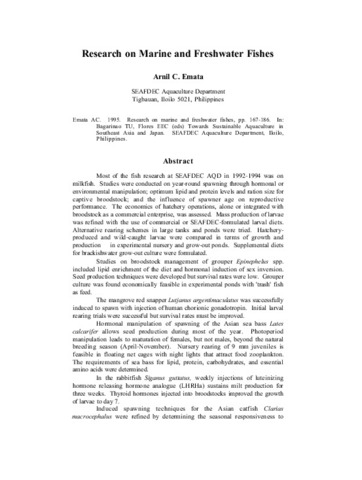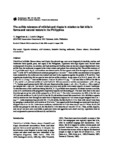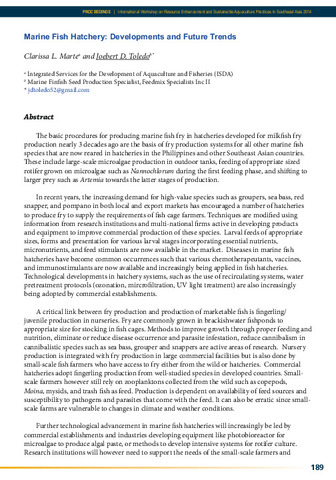| dc.contributor.author | Hilomen-Garcia, Grace V. | |
| dc.date.accessioned | 2013-11-18T06:08:32Z | |
| dc.date.available | 2013-11-18T06:08:32Z | |
| dc.date.issued | 1998 | |
| dc.identifier.citation | Hilomen-Garcia, G. V. (1998). Sensitivity of fertilized milkfish (Chanos chanos Forsskal) eggs to mechanical shock and simulated transport. Aquaculture, 159(3–4), 239–247. | en |
| dc.identifier.issn | 0044-8486 | |
| dc.identifier.uri | http://hdl.handle.net/10862/1744 | |
| dc.description.abstract | Naturally-spawned milkfish eggs are routinely subjected to physical manipulation during collection and transport. To avoid unnecessary mortalities, sensitivity of milkfish eggs to mechanical shock was determined at different times after fertilization. Shock sensitivity was assessed in terms of egg mortality within 8 h after a free fall over calibrated heights. The LD50 and LD10 (drop height resulting in 50% and 10% mortality) were estimated for 11 stages of embryonic development. The corresponding force (F) imparted to eggs on impact after a free fall was also computed. LD10 estimates (cm) and their corresponding F (erg per egg) showed that shock sensitivity of milkfish eggs was high during cleavage until the early segmentation stage, rapidly declined as segmentation proceeded until the head and tail started to separate from the yolk, but returned to high levels when the embryo begun twitching and the heart beating until near-hatching. To determine the sublethal effects of mechanical shock, C-shaped embryos were subjected to a free fall over varying heights and transported to a hatchery for further incubation and hatching. The effects of varying periods of simulated transport (mobile or stationary periods) were also examined. At C-shaped embryo stage, neither mechanical shock (F, 13–127 erg per egg) nor prolonged shaking (3–9 h) simulating mobile periods of egg transport affected hatching rate, larval mortality, and incidence of deformed larvae. Exposure to still water (unshaken) simulating stationary periods of egg transport, however, tended to lower hatching rate and significantly increased the incidence of deformed larvae and the combined mortalities and deformed larvae. These results indicate that the sensitivity of milkfish eggs to mechanical shock varies during incubation and that C-shaped embryos may be manipulated or transported with minimum risk of injury. Some recommendations are given regarding proper handling and transport of fertilized eggs. | en |
| dc.language.iso | en | en |
| dc.publisher | Elsevier | en |
| dc.subject | Chanos chanos | en |
| dc.subject | milkfish | en |
| dc.subject | Deformed larvae | en |
| dc.subject | Physical stress | en |
| dc.title | Sensitivity of fertilized milkfish (Chanos chanos Forsskal) eggs to mechanical shock and simulated transport | en |
| dc.type | Article | en |
| dc.citation.volume | 159 | |
| dc.citation.issue | 3–4 | |
| dc.citation.spage | 239 | |
| dc.citation.epage | 247 | |
| dc.citation.journalTitle | Aquaculture | en |
| dc.subject.asfa | stress | en |
| dc.subject.asfa | fish culture | en |
| dc.subject.asfa | fish eggs | en |
| dc.subject.asfa | fish handling | en |
| dc.subject.asfa | fish storage | en |
| dc.subject.asfa | mortality causes | en |
| dc.subject.asfa | embryonic development | en |
| dc.subject.asfa | forced convection | en |
| dc.subject.asfa | incubation period | en |
| dc.identifier.doi | 10.1016/S0044-8486(97)00235-4 | |
| dc.subject.scientificName | Chanos chanos | |



